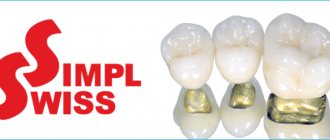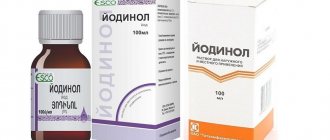Swelling in the mouth, the presence of painful ulcers and white plaque, inflammation of the gums and fever - all this may indicate the presence of stomatitis. This disease is diagnosed in patients of any age, and the fight against it often becomes difficult and lengthy. Dentists consider miramistin for stomatitis to be one of the best medicines. What is its peculiarity, how is the drug used correctly, and at what age is its use recommended?
How is stomatitis diagnosed?
The disease is manifested by the presence of inflammatory processes on the oral mucosa, which is caused by pathogenic microorganisms. Stomatitis has several forms of manifestation. Each of them has different symptoms. It depends on the reason for the development. One or another type of disease can be diagnosed based on the following symptoms.
- When stomatitis is of viral origin, the patient develops a high temperature. The oral mucosa becomes covered with ulcers. The lymph nodes, which are located in the lower jaw area, become enlarged. Very contagious.
- The traumatic origin of the disease is accompanied by swelling and soreness of the oral cavity. The child becomes whiny and refuses to eat. The temperature may rise in rare cases. This type of stomatitis is not contagious.
- With candidal stomatitis, the oral cavity is completely covered with a pronounced white coating. There is pain when eating. The temperature is rising. The disease is contagious.
- The bacterial type of disease is most often provoked by staphylococci and streptococci. At the beginning of its development, it manifests itself as redness and swelling of the gums. Next, the oral cavity becomes covered with ulcers, which cause a painful syndrome. Children may develop a fever. Fever is rare in adults.
- The allergic type begins with swelling and inflammation of the gums. Elevated temperature may not always be present. Easily turns into another form of stomatitis. For development, it will be sufficient for viral or bacterial agents to enter the oral cavity.
In addition to the types described above, so-called symptomatic stomatitis is sometimes diagnosed. It appears as a symptom of another disease.
Types of stomatitis depending on age
Dentists note a certain pattern between the patient’s age and the type of stomatitis. Children are most often affected by the disease. This is due to the structural features of the child’s mucous membrane, which is formed gradually, and therefore has its own characteristic features.
- Children under one year of age often develop the fungal type (thrush). This is due to the slightly acidic or neutral reaction of saliva, which creates favorable conditions for Candida fungi.
- From one year to three years - the viral type. Saliva loses its protective properties. The content of lysozyme, a substance that fights pathogens, decreases.
- Until the age of seven, local immunity declines. The child becomes susceptible to a bacterial type of disease.
- The active development of immunity before the age of fifteen becomes the cause of an allergic type of stomatitis.
Most often, the medicinal antiseptic Miramistin is prescribed to combat stomatitis. Miramistin for stomatitis has proven itself well for patients of any age. The drug is approved for use from the first days of their life and for nursing mothers.
Indications for use of Miramistin
Since the product is a broad-spectrum antiseptic, it is used in many ways to disinfect surfaces. In ENT practice, Miramistin is prescribed for diseases of the pharynx, trachea, nasal passages and external ear.
In gynecology, the solution is used in the following situations:
- inflammation and redness of the mucous membranes of the genital organs;
- the presence of ruptures after delivery;
- vaginal wounds of other etiology;
- postpartum infections;
- inflammation of the endometrium.
Surgeons prescribe Miramistin in case of violation of the integrity of the skin, as well as for the prevention and treatment of suppuration of wounds. Injuries that do not heal for a long time are also recommended to be treated with a solution, which eliminates the addition of a secondary infection, thereby accelerating the healing process.
In dentistry, Miramistin is used in the fight against stomatitis, as well as gingivitis. For gum diseases - periodontal disease - treatment of the mucous membranes with an antiseptic solution is also prescribed.
For second and third degree burns of the skin, Miramistin protects the surface from infection, and when preparing for dermatoplasty, it reduces the risk of rejection of the material prepared for transplantation.
As an antifungal agent, Miramistin is effective against mycoses of the feet and candidiasis of the mucous membranes of the oral cavity and reproductive system.
Is Miramistin effective for stomatitis?
The drug has antimicrobial and bactericidal properties, destroying gram-negative and gram-positive microflora. Under the influence of Miramistin, the proliferation of fungi is inhibited, stopping the development of the disease. The medicine helps to form an adequate and correct immune response. As a result:
- local immunity significantly enhances its protective properties;
- the infection stops spreading to healthy tissue;
- already damaged tissues are restored faster;
- the drug helps to adsorb (collect) pus and remove waste products of pathogenic microorganisms;
- stops inflammatory processes.
Miramistin is available for sale in three forms: as a spray, solution and ointment. This helps the patient choose the most convenient option for using the drug.
A big advantage of the drug is its good compatibility with other antibiotics that are taken to increase tissue regeneration, as well as the taste of the drug. Many medications that are intended for treating the oral cavity are produced with an unpleasant taste. This becomes a problem when using them for children. Reflex vomiting and increased salivation can create a dangerous situation for the child’s health. Miramistin is distinguished by the absence of antipathetic odors and tastes. The solution is more similar in taste to plain water, which greatly simplifies the procedure for using it for children.
The drug is also suitable for preventive purposes when one of the family members already has the problem. To do this, the oral cavity is sprayed with Miramistin solution 2 times a day, but the drug cannot be used for more than 10 days.
The use of the drug does not always guarantee a positive result in treatment. Miramistin will not bring the expected result for allergic stomatitis. Treatment may fail if the disease is caused by dental problems. These include: the presence of periodontal disease or tartar, advanced caries, as well as the presence of other inflammatory processes. First you need to eliminate the original cause. Then just start fighting stomatitis.
Features and scope of use of the drug in children under one year of age and older
As mentioned above, Miramistin is actively used not only in dentistry, but also in other areas of medicine. Interestingly, today it is most often purchased for children from birth to one year, as well as for older children. It’s not surprising, because it allows you to cope with a whole list of problems.
Prevention and treatment of infectious viral diseases
ARVI, acute respiratory infections, sore throat and influenza occur more often in children than in adults. Why? Due to weak immunity and the desire to taste everything that is in their way. For example, in kindergarten, children can lick other people's toys, and after a walk they can put their fingers, which contain bacteria and infectious agents, into their mouths.
At the first suspicion of viral and infectious diseases, it is necessary to use “Miramistin” for children, where the kit includes a special nozzle. Mothers of babies from birth to one year and older find it convenient that the medicine is equipped with an applicator for the throat and other mucous membranes. The sprayer allows you to carry out the procedure safely, comfortably, and in doses.
So, if you use Miramistin for the throat of children, then we will tell you how to use the drug. Simply insert the spray head into your baby's mouth and press the bottle on top 2-3 times. These manipulations can be repeated up to 3-4 times a day. At the same time, parents will not have to worry that the child has swallowed the liquid, because, according to the manufacturer, it is safe, since it is not absorbed into the body, but is excreted naturally.
"Miramistin" is actively used not only in dentistry
“I constantly give Miramistin to my child when the slightest signs of a cold appear. My daughter is 2 years old, but she calmly tolerates it when I drop it into her throat and nose. Once the doctor even prescribed drops into the eyes. The drug is tasteless, like ordinary water, colorless. Always helps my daughter out. But when I use it myself, I notice that it doesn’t help with ARVI at all. I think it's better for bacterial infections."
Polina, babyblog.ru
“My pediatrician does not recommend taking Miramistin into the throat and nose through a spray bottle for children under 2 years of age. The sprayer works very powerfully, the stream is supplied under strong pressure. For very young children, it can damage something inside or injure, cause pain, or it can seriously frighten them. It’s better to drip through a pipette..."
Krasnova Svetlana, review from the forum deti.mail.ru
After recovery, use Miramistin for the throat for another 5-7 days. Give it to children before going out to public places, kindergartens, schools, shopping centers and hospitals. This will provide protection and help strengthen weakened immunity.
“Miramistin” is not the only remedy for children that will save you from colds, sore throat and sinuses. With timely treatment, it, of course, allows you to cope with the disease 3-5 days earlier than usual. But for sore throat, flu, acute respiratory infections, it is important to use it only in combination with other medications prescribed by the doctor: antipyretics, vitamins, anti-inflammatory drugs, antibiotics (the drug enhances the effect of antibiotics on various pathogens). The child also needs to be provided with bed rest and no stress.
Pustular diseases and infections
Such pathologies are mainly characteristic of newborns and children under 1 year of age. Their immunity is too weak to fight streptococci and staphylococci that live on the skin and foreign objects. In the absence of preventative and treatment measures, bacteria from the surface of the skin quickly penetrate into its deeper layers, because in babies it has a loose structure and is very thin. To prevent this, apply the drug externally to the affected areas up to 2-3 times a day. It will defeat any bacteria and fungi, and will also reduce the inflammatory process if it appears.
Such pathologies are mainly characteristic of newborns
For treating wounds, burns, abrasions and scratches
Children are restless people. They constantly injure the skin, fall and hit. To prevent even the slightest microcracks and wounds on the skin from becoming suppurated, they need to be disinfected in a timely manner, and Miramistin will do a very good job for this purpose. The spray, according to the instructions for use, will help avoid suppuration by completely absorbing purulent exudate, and will also promote rapid regeneration of damaged skin cells, which is especially important for children.
The drug is used for abrasions and scratches
Another advantage of the drug is that it is completely transparent, which means that, unlike iodine, brilliant green or fucorcin, it will remain invisible, and children will not stain their clothes with it.
Leave the comment as it appears in the text
“Miramistin today is often used as a children's drug, although it is not exactly that. Many pediatricians consider it a sacred duty to prescribe it for all diseases. Yes, and mothers buy it over the counter, and then give it to their children if they suspect any disease, sprinkle it on rashes and pimples, use it for prevention, for a runny nose. Of course, the manufacturer assures that this is not an antibiotic and there is no addiction to it. However, with frequent and unjustified use, the child’s body becomes immune to the main active ingredient of the drug, and this is what fails at the most necessary moment,” says pediatrician V.A. Olkhovskaya.
For the treatment of insect bites
The whole danger of bites in children comes down to the fact that children begin to actively scratch the sore area with their hands and introduce infection into the resulting wound. Also, babies' skin is very delicate, so a large swelling, rash or irritation may appear at the site of the bite. To prevent this from happening, simply spray the preparation onto the bite area and leave it until it dries completely.
The drug is good for insect bites
As part of complex therapy against dermatitis
Miramistin is hypoallergenic and can be safely used in combination with other drugs. They can be used topically to treat rash-prone areas. The course of use in this case is determined by the attending physician.
“We use Miramistin spray in all situations. It is good for children and adults. If I notice a red throat in myself or my sons, or if my throat is sore, then we immediately start spraying several times a day. We have been using it for many years in a row, so the instructions are somehow not really needed anymore. I know that there will be no harm from it. This is a proven remedy. And I also really like that it comes in a large 500 ml bottle. lasts a very long time!”
Caramel, review from the deti74.ru forum
The drug is also well suited for the treatment and prevention of diaper rash in babies who wear diapers. It is completely hypoallergenic, there are no dyes, preservatives or fragrances. It contains only the active ingredient miramistin and purified water. The drug improves local immunity, accelerates the regeneration of skin cells, eliminates irritation and redness.
Notice
: Undefined variable: post_id in
/home/c/ch75405/public_html/wp-content/themes/UltraSmile/single-item.php
on line
45 Notice
: Undefined variable: full in
/home/c/ch75405/public_html/wp-content /themes/UltraSmile/single-item.php
on line
46
Rate this article:
( 2 ratings, average: 5.00 out of 5)
prevention
- According to the official website www.miramistin.ru
- Kalantarov G.K. Features of the course of catarrhal gingivitis during treatment with “Miramistin” // Medical and pharmaceutical journal “Pulse”. - year 2012.
Expert “Children who often suffer from acute respiratory viral infections and acute respiratory infections have weak local immunity and are susceptible to the development of caries and gingivitis. After all, bacteria from the throat and nose easily spread into the oral cavity and settle on the gums and enamel. At the same time, children's saliva cannot resist them, since it contains few protective enzymes. Treatment with antiseptics during illness and for several days after it is a necessary preventative measure, including dental diseases.” Dentist-therapist Elena Vladimirovna Orlova
Side effects and contraindications
Side effects from using the drug include the risk of developing an allergic reaction. It occurs very rarely and most often affects young patients. A burning sensation may occur during use. This phenomenon is considered normal and does not require refusal from further use.
Contraindications include individual intolerance of the body to the components of the drug, which occurs in the presence of certain types of allergies and dermatitis. In any case, Miramistin should be taken under the supervision of a specialist.
Use of the drug for children
Miramistin can be used from the first weeks of a baby’s life, but since a baby at this age will not yet be able to rinse his mouth, a special spray nozzle is used. Using a spray, lesions of the mucous membrane are treated with a single press. The procedure is repeated 4 times/day. Until the child is four years old, you should avoid getting the medicine deep into the neck and onto the tonsils. The effectiveness of the drug can be increased. To do this, you will need to create an alkaline environment in the oral cavity. For these purposes, rinse with a soda solution. The solution is made from a glass of water and a teaspoon of soda.
Miramistin, which is available in gel form, showed good results. Staying on the mucous membrane for a long time, the gel effectively penetrates into the deep layer of the mucous membrane. To apply the drug, you can use a gauze swab and wipe the inflamed areas.
Miramistin ointment is less effective for children. It is quickly washed off by the baby’s saliva and is not able to penetrate into the deeper layers.
Sanitation may be prescribed to a child who can rinse his mouth independently. The product is diluted with boiled, cooled water in a 1:1 ratio. Age dosage:
- less than 6 years – 3..6 ml;
- up to 12 years – 6..10 ml;
- over 14 years old – 15 ml.
The procedure is repeated up to six times a day.
What is stomatitis? Causes, symptoms, treatment of the disease
Stomatitis is an inflammation of the mucous membrane in the oral cavity. In one form or another, almost every person, starting with infants, has suffered from this disease at least once in their life. The disease can last from 4 days to 2 weeks, depending on the severity and effectiveness of treatment. Effective treatment of stomatitis at home is also possible, but not every form of this disease. If the disease is left to take its course, complications are likely.
Causes of stomatitis and its types
There are certain types of stomatitis, which differ precisely in the causes of the disease:
- fungal - caused by a special fungus Candida albicans and is considered a contagious disease; accordingly, the cause of the disease may be contact with an already sick person or poor oral hygiene;
- aphthous - caused by a lack of essential vitamins and minerals in the body, especially iron and vitamin B 12;
- herpetic - it is provoked by the herpes virus, it is also contagious, the cause is contact with the skin or lips of the patient;
- occurring after external influences - inflammation of the oral mucosa, like stomatitis in adults, often appears due to improperly selected dentures, as a result of frequent alcohol consumption and smoking.
- allergic - this type of stomatitis often occurs after taking certain medications, especially in large quantities;
- which is a reaction to prolonged administration or use of antibiotics that destroy beneficial microorganisms in the oral cavity, it becomes unprotected from any type of bacteria and viruses.
Sometimes the cause of stomatitis can even be low-quality toothpaste, some components of which can irritate the mucous membrane.
Stomatitis
Symptoms
Each type of stomatitis has common symptoms, but may differ in some ways:
- usually the disease begins with slight redness;
- later, the affected areas begin to itch and hurt;
- in advanced cases, bubbles form that can burst;
- fungal stomatitis has a characteristic white coating, especially in infants;
- herpetic stomatitis is expressed in characteristic rashes on the lips, sometimes large and painful;
- if the disease is not treated, it can progress to inflammation in the facial area.
Sometimes stomatitis can be one of the signs of other diseases, such as diabetes.
IMPORTANT! Stomatitis never causes fever, blood pressure, or stomach upset. These symptoms already indicate another concomitant disease, often more serious.
In infants, a symptom of stomatitis may be refusal to feed or unreasonable crying and general anxiety.
Treatment
If the disease is detected at an early stage, you can use proven home remedies. For example, rinse your mouth with a solution of hydrogen peroxide for several days; it is sold in every pharmacy. Only the peroxide itself should be diluted with water in a ratio of 1:5. Regular consumption of fresh yogurt, but without dyes, helps well - this procedure restores healthy microflora. Interestingly, regular consumption of garlic also helps healthy microflora and kills fungi and viruses.
Before deciding how to treat stomatitis, you need to determine what causes it. If antibiotics are used, success can be achieved by limiting their use. If this is an allergic reaction, remove the allergen and take antihistamines.
In cases where you have to deal with a viral or fungal infection, medications are used to treat stomatitis: antiviral ointments and antifungal agents: miramistin or hexoral.
Traditional medicine recommends rinsing the mouth with decoctions of calendula, St. John's wort or chamomile. As a protective agent for the mucous membrane, you can use sea buckthorn oil or ordinary petroleum jelly. Aloe juice is a good disinfectant for the oral cavity.
Prevention
To prevent the occurrence of this disease, you should follow certain simple rules:
- Maintain regular oral hygiene;
- do not abuse sweets and foods containing yeast;
- do not use antibiotics without a doctor’s prescription;
- Smoking and drinking less.
Do not forget about regular visits to the dentist; this often allows you to identify and prevent almost all possible diseases of the teeth and oral cavity.
Miramistin for adults
Adults, as well as children over 14 years of age, with stomatitis, choose any suitable option for treating damaged areas of the mucous membrane. This can be either rinsing with a solution or simply irrigating with a spray. For one rinsing procedure, 15 ml of an undiluted solution (0.01%) of Miramistin is used. This solution is commercially available ready-made. Additional manipulations for its dilution or preparation are no longer required.
The course of treatment lasts an average of 7 days, 4 procedures per day. The procedures should be carried out regularly at approximately equal intervals in time. Maintaining time intervals will help achieve more effective results. The drug is quickly washed off by saliva, so a long time without it reduces the therapeutic effect.
During administration, in places where the drug comes into contact with damaged areas of the mucous membrane, a slight burning sensation may be felt. The sensation goes away after a few seconds and is not a reason to discontinue the drug.
Miramistin for gum inflammation
Miramistin is often used for gum inflammation, which manifests itself as a symptom of various dental ailments. The drug has proven itself in complex treatment, where it is used to rinse the mouth. To obtain the most positive result from the rinsing procedure, you need to properly prepare the gums and mucous membranes. This is done as follows:
- The oral cavity is thoroughly cleaned with conventional hygiene products (brush, dental floss and toothpaste). This will make it possible to eliminate plaque and food debris from all hard-to-reach places where the drug should subsequently reach.
- The drug will give a positive effect faster if you increase blood circulation. To do this, you should massage your gums. It is done using the thumb and index finger. The gums are massaged using massage movements for five minutes. For massage, you can use a paste containing medicinal herbs or a drop of essential oil.
- After the massage, the oral cavity is rinsed with water at room temperature (in cases where additional products were used).
Further, all rinsing procedures occur in the order prescribed by the doctor.
In dentistry, Miramistin is also used for the treatment of periodontitis, for hygienic procedures for removable dentures, and also as an effective means for the prevention of microbial complications that may arise after surgical interventions on the oral mucosa.
Sources used:
- “Outpatient surgical dentistry” (Bezrukov V.)
- Miramistin. Collection of works / Ed. Yu. S. Krivosheina. - M., Medical Information Agency, 2004.
- Miramistin. Encyclopedia of medicines and pharmaceutical products. Radar Patent.
MIRAMISTIN external solution 0.01% 150 ml with spray.
Directions for use and doses
The drug is ready for use.
Instructions for using the packaging with spray nozzle:
1. Remove the cap from the bottle and also remove the urological applicator from the 50 ml bottle.
2. Remove the supplied spray nozzle from its protective packaging.
3. Attach the spray nozzle to the bottle.
4. Activate the spray nozzle by pressing again.
Surgery, traumatology, combustiology.
For preventive and therapeutic purposes, the surface of wounds and burns is irrigated, wounds and fistula tracts are loosely tamponed, gauze swabs soaked in the drug are fixed. The treatment procedure is repeated 2-3 times a day for 3-5 days. A highly effective method of active drainage of wounds and cavities with a daily consumption of up to 1 liter of the drug.
Obstetrics, gynecology.
In order to prevent postpartum infection, it is used in the form of vaginal irrigation before childbirth (5-7 days), during childbirth after each vaginal examination and in the postpartum period, 50 ml of the drug in the form of a tampon with an exposure of 2 hours, for 5 days. When women give birth by cesarean section, the vagina is treated immediately before the operation, the uterine cavity and the incision on it are treated during the operation, and in the postoperative period tampons soaked in the drug are inserted into the vagina with an exposure of 2 hours for 7 days. Treatment of inflammatory diseases is carried out over a course of 2 weeks by intravaginal administration of tampons with the drug, as well as by the method of medicinal electrophoresis.
Venereology.
For the prevention of sexually transmitted diseases, the drug is effective if it is used no later than 2 hours after sexual intercourse. Using a urological applicator, insert the contents of the bottle into the urethra for 2-3 minutes: for men (2-3 ml), for women (1-2 ml) and into the vagina (5-10 ml). Treat the skin of the inner thighs, pubis, and genitals. After the procedure, it is recommended not to urinate for 2 hours.
Urology.
In the complex treatment of urethritis and urethroprostatitis, 2-3 ml of the drug is injected into the urethra 1-2 times a day, the course is 10 days.
Otorhinolaryngology.
For purulent sinusitis, during puncture the maxillary sinus is washed with a sufficient amount of the drug. Tonsillitis, pharyngitis and laryngitis are treated by gargling, throat and/or irrigation using a spray nozzle, pressing 3-4 times, 3-4 times a day. The amount of drug per rinse is 10-15 ml.
In children.
In case of acute pharyngitis and/or exacerbation of chronic tonsillitis, the pharynx is irrigated using a spray nozzle. Children aged 3-6 years: by pressing the head of the spray nozzle once (3-5 ml per irrigation), 3-4 times a day, for children aged 7-14 years by pressing twice (5-7 ml per irrigation) , 3-4 times a day, for children over 14 years old, by pressing 3-4 times (10-15 ml per irrigation) 3-4 times a day. The duration of therapy ranges from 4 to 10 days, depending on the timing of remission.
Dentistry.
For stomatitis, gingivitis, periodontitis, it is recommended to rinse the mouth with 10-15 ml of the drug 3-4 times a day.








